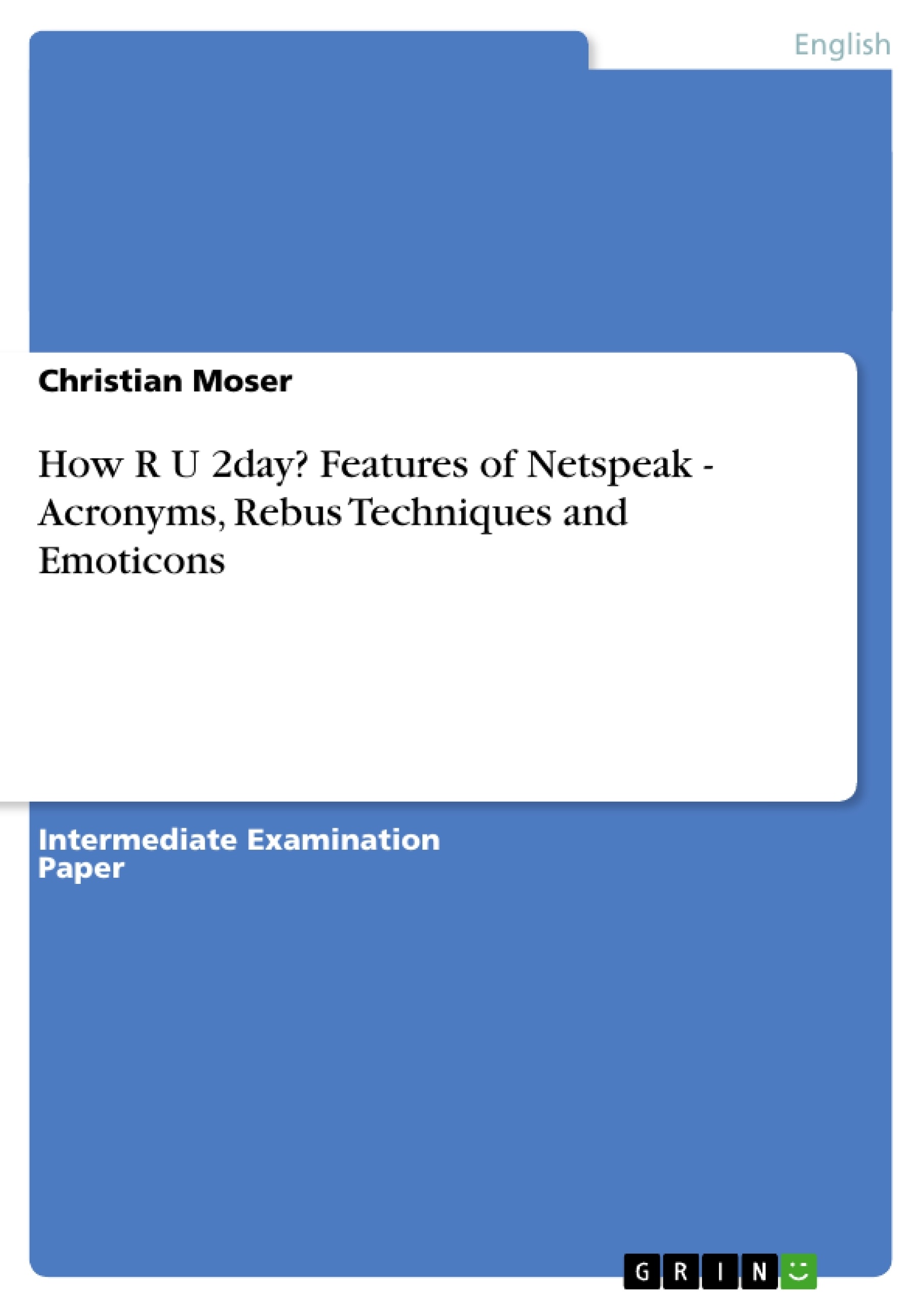In the course of this paper I shall analyse abbreviations found in four chat sessions. My main hypothesis is that Internet users have adopted several ways of abbreviating in order to make their contributions more efficient. Furthermore, a great number of these abbreviations indicate, or are trying to render, the emotional state of the speaker and in doing so make the interpretation of an utterance easier. In addition, it appears that another reason for abbreviating is to compensate for a lack of information, such as tone and mood of a speaker. This deficit arises, possibly, from the lack of personal contact between the speakers and is characteristic of the use of abbreviations as used in English on the Internet. Taking a more general approach, Crystal included the computer mediated variant of English in his term “Netspeak”; firstly, in hisLanguage and the Internet(Crystal 2001: 17) and, three years later, inThe Language Revolution.(Crystal 2004: 65) I shall take a slightly closer look at the concept in section two.
Section three deals with two issues connected to the material I collected. Firstly, I comment in section 3.1 on how I reproduced the logged chat sessions and most importantly why I deleted certain contributions I identified as not being part of the ongoing conversation. Section 3.1 also contains a short description of the chats I used as the data for my analysis. The following subsection 3.2 deals with the problem of the anonymity of the Internet users and the resulting problems for research. Section four consists of the analysis of the collected data. I decided to deal only with abbreviations as they occur in written Internet communication, whereas I use written here in its literal meaning, i.e. in the sense of typed in via keyboard. I divided these abbreviations into three types, namely acronyms, rebus techniques, or phonetic spellings, and emoticons. These are discussed in the respective sub sections. In addition to this, I divided the subsection on emoticons into two parts, discussing the absence of both smileys and shorthands.
The last section presents my conclusions for this analysis of three features of Netspeak. Furthermore, I shall point out further possible directions for research.
Inhaltsverzeichnis (Table of Contents)
- Introduction
- Netspeak
- Material
- Note on the reproduction of data
- ASL - The problem of speaker identity on the Internet
- Analysis of the collected data
- Acronyms
- Rebus Technique
- Emoticons
- Smileys
- Shorthand Expressions
- Conclusion
Zielsetzung und Themenschwerpunkte (Objectives and Key Themes)
This paper analyzes abbreviations found in four chat sessions, focusing on how internet users abbreviate to improve communication efficiency. The paper explores the relationship between abbreviations and the emotional states of speakers, and how these abbreviations help clarify meaning. Additionally, it investigates how abbreviations compensate for the lack of information present in online communication due to the absence of personal contact.
- Efficiency of abbreviations in online communication
- Relationship between abbreviations and emotional expression
- Compensation for lack of information in online communication
- Analysis of specific types of abbreviations (acronyms, rebus techniques, emoticons)
- Exploring the concept of "Netspeak" and its characteristics
Zusammenfassung der Kapitel (Chapter Summaries)
- Introduction: Introduces the research question and outlines the paper's structure. It defines "Netspeak" and discusses its relevance to online communication.
- Netspeak: Explores the concept of "Netspeak" as a new form of language influenced by both spoken and written communication. It discusses the origins of the term and its distinction from traditional written language.
- Material: Explains the methods used for data collection, including the selection of chat sessions and the process of data reproduction. It discusses the challenges related to the anonymity of Internet users and the impact on research.
- Analysis of the collected data: This section focuses on analyzing different types of abbreviations found in online communication, including acronyms, rebus techniques, and emoticons. It examines the role of these abbreviations in conveying meaning and emotions.
Schlüsselwörter (Keywords)
The primary keywords and focus topics of the text include "Netspeak," "abbreviations," "online communication," "emotional expression," "acronyms," "rebus techniques," "emoticons," "smileys," "shorthand expressions," and "speaker identity." This research explores the characteristics of language used in online environments, particularly focusing on the role of abbreviations in conveying meaning and emotion.
- Citar trabajo
- Christian Moser (Autor), 2004, How R U 2day? Features of Netspeak - Acronyms, Rebus Techniques and Emoticons, Múnich, GRIN Verlag, https://www.grin.com/document/48087



